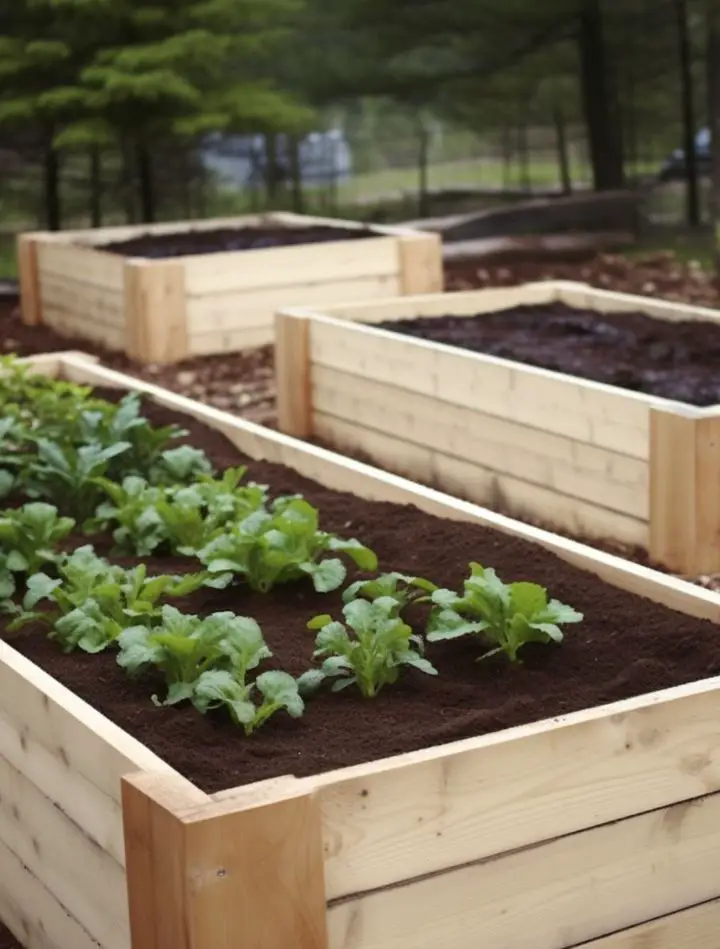Raised Bed Gardening: Tips to Avoid Common Mistakes
Raised bed gardening is a popular and efficient method for growing vegetables, herbs, and flowers in a controlled environment. These elevated planting areas offer numerous advantages, such as improved drainage, reduced soil compaction, and better accessibility. However, despite its apparent simplicity, many gardeners make avoidable mistakes that can impact the success of their raised bed gardens. In this article, we will explore the ten most common mistakes and provide tips on how to avoid them.
1. Choosing the Wrong Location
Mistake: Placing raised beds in a shady area can limit sunlight exposure, leading to poor plant growth and low yields.
Solution: Observe your garden throughout the day to identify the sunniest spot. Ideally, raised beds should receive at least 6-8 hours of direct sunlight daily. Avoid areas shaded by tall trees or buildings, and consider the direction of prevailing winds, as strong winds can dry out the soil quickly and stress your plants. If possible, locate the beds in a sheltered area.
2. Neglecting Soil Quality
Mistake: Filling raised beds with poor-quality soil lacking essential nutrients.
Solution: Prepare a balanced growing medium by mixing equal parts garden soil, compost, and aged manure. Add organic matter like leaf mold or peat moss to enhance soil structure and water retention. Test your soil before planting to ensure it has the right pH and nutrient levels for the plants you intend to grow.
3. Overwatering or Underwatering
Mistake: Inconsistent watering practices can stress plants and hinder their growth.
Solution: Install a drip irrigation system to ensure consistent watering. Drip irrigation delivers water directly to the plant roots, reducing the risk of overwatering or underwatering. Alternatively, use a soaker hose or hand watering with a watering can. Check soil moisture regularly by sticking your finger into the top inch of soil, and water only when it feels dry.
4. Ignoring Crop Rotation
Mistake: Planting the same crops in the same raised beds year after year can lead to nutrient depletion and increased pest and disease pressure.
Solution: Create a crop rotation plan to avoid planting the same crops in the same beds year after year. Rotate crops among different plant families. For example, avoid planting tomatoes, peppers, or eggplants in the same bed for consecutive seasons. This practice helps prevent soil-borne diseases and ensures balanced nutrient uptake.
5. Overcrowding Plants
Mistake: Planting too many crops too close together can result in stunted growth and increased competition for nutrients.
Solution: Follow the recommended spacing guidelines for each plant species. Adequate spacing allows plants to grow properly, reduces competition for water and nutrients, and promotes better airflow to help prevent the spread of diseases.
6. Using Improper Planting Depth
Mistake: Planting seeds or seedlings too deep or too shallow can hinder their establishment.
Solution: Follow the instructions on seed packets or plant tags. Generally, small seeds should be planted shallowly, while larger seeds can be planted deeper. For transplants, create a hole deep enough to accommodate the root ball and cover it with soil up to the original soil line.
7. Forgetting About Weeds
Mistake: Ignoring weed growth in raised beds can deprive plants of essential nutrients and water.
Solution: Regularly inspect your raised beds for weed growth. Pull weeds out by hand or use a handheld weeding tool to remove them. Mulch around your plants with organic materials like straw, wood chips, or compost to help suppress weed growth.
8. Failing to Monitor Pests and Diseases
Mistake: Neglecting to monitor for pests and diseases can lead to infestations that devastate your garden.
Solution: Regularly check your plants for signs of pests or diseases, such as chewed leaves or discolored spots. Use integrated pest management (IPM) techniques like handpicking pests, using neem oil spray, or introducing beneficial insects. For diseases, promptly remove infected plant parts and avoid overhead watering to prevent waterborne diseases.
9. Not Adding Organic Matter Regularly
Mistake: Over time, organic matter in raised beds decomposes, leading to a decline in soil quality.
Solution: Each year, before planting new crops, replenish your raised beds with organic matter. Add a layer of compost, aged manure, or well-rotted kitchen scraps and work it into the top few inches of soil. This enriches the soil with nutrients, improves soil structure, and supports beneficial soil microorganisms.
10. Neglecting Seasonal Adjustments
Mistake: Failing to adapt raised bed gardening practices to changing seasons can lead to poor results.
Solution: Adapt your gardening practices based on the changing seasons. In hot summer months, increase watering frequency and provide shade for heat-sensitive plants. In colder seasons, use row covers or cloches to protect delicate plants from frost. Select appropriate crops for each season and plan your planting schedule accordingly to maximize your raised bed garden’s productivity.
By avoiding these common mistakes and following these tips, you can ensure a successful and productive raised bed garden.
